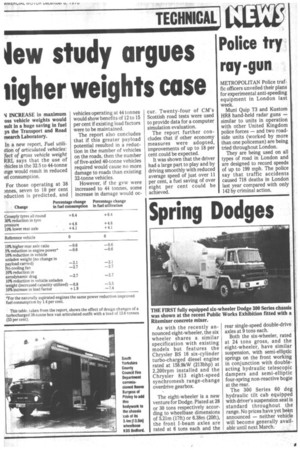few study argues ligher weights case
Page 23

If you've noticed an error in this article please click here to report it so we can fix it.
SI INCREASE in maximum .oss vehicle weights would suit in a huge saving in fuel lys the Transport and Road esearch Laboratory.
In a new report, Fuel utilittion of articulated vehicles: feet of gross vehicle weight RRL says that the use of .thicles in the 32.5 to 44-tonne tnge would result in reduced tel consumption.
For those operating at 38 mines, seven to 10 per cent eduction is predicted, and vehicles operating at 44 tonnes would show benefits of 12 to 15 per cent if existing load factors were to be maintained.
The report also concludes that if this greater payload potential resulted in a reduction in the number of vehicles on the roads, then the number of five-axled 40-tonne vehicles required would cause no more damage to roads than existing 32-tonne vehicles.
However, if the gvw were increased to 44 tonnes, some increase in damage would oc cur. Twenty-four of CM's Scottish road tests were used to provide data for a computer simulation evaluation.
The report further concludes that if other economy measures were adopted, improvements of up to 18 per cent could be expected.
It was shown that the driver had a large part to play and by driving smoothly with reduced average speed of just over 11 per cent, a fuel saving of over eight per cent could be achieved.
































































































































